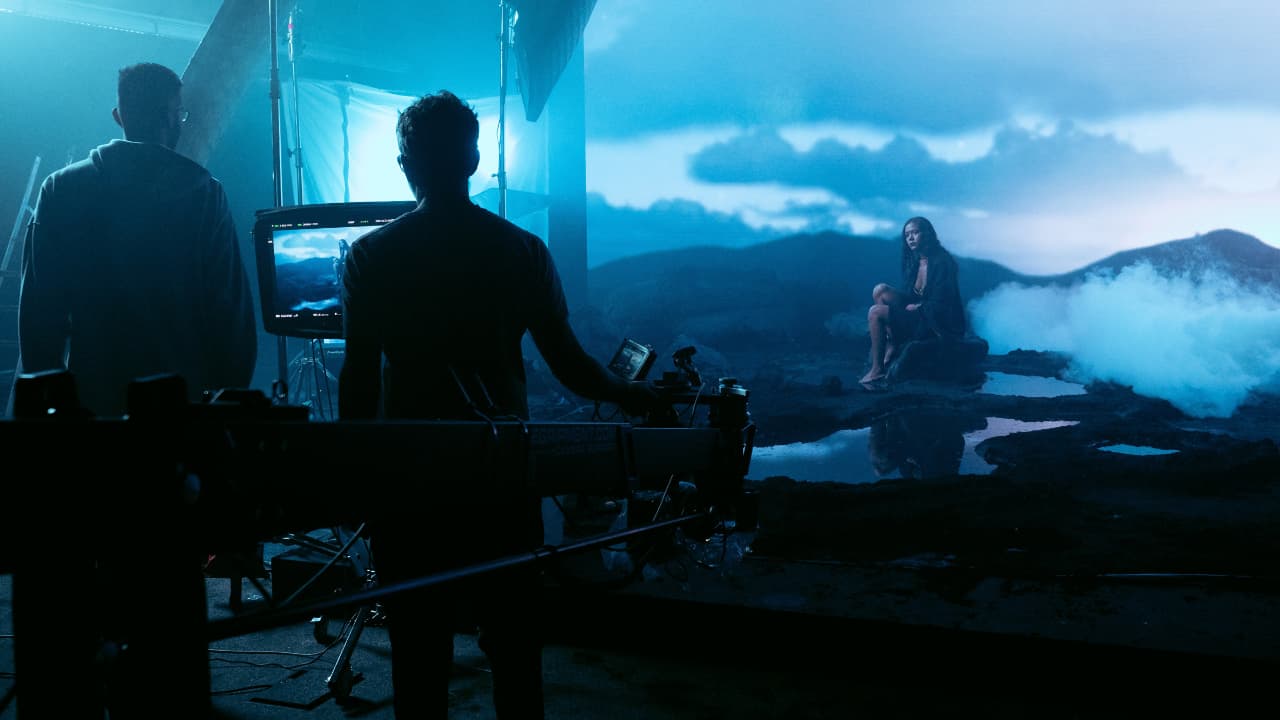
Why Racquet Studios chose the Canon EOS C400 for its virtual productions, leveraging its full-frame sensor and advanced connectivity to enhance filmmaking in LED volumes.
[Sponsored article]
When it comes to virtual production, not all cameras are created equally. Shooting in LED volume stages brings many notable advantages to productions of all sizes and can allow them to get through more pages of script a day than is often feasible on location or conventional sets. But it also puts certain demands on the kit used to shoot against LED.
Racquet Studios is one of the new breed of creative production companies specialising in virtual production and, with its creative HQ in Sussex, production base at Island Studios in West London, and country-wide pop-up solutions, the team has alighted on the $7499 Canon EOS C400 as a camera of choice for VP work. The EOS C400 has very much been designed as a professional workhorse, with a next-generation full frame BSI sensor, modular design and uncompromising connectivity, and some of those features mean that it is a perfect fit for VP.
“When shooting LED, the bigger the sensor, the better,” says Racquet Studios’ Technical Director, Rob Ruardy. “The more separation you can achieve between the background, giving a bit more realism to your scene, is always a good thing. Not only has the C400 got the full-frame sensor, it’s also got triple base ISO, so we can really shoot with all kinds of different brightness settings on the volume.”
The C400’s triple base ISO — 800, 3200, and 12800 — has certainly proved an eye-catching feature for many users, and Ruardy is also quick to namecheck the Canon colour science at the heart of the C400. But one of the interesting quirks about VP is that image quality alone is far from the only criteria that companies use to select a camera to work with LED walls. The job is not just about not capturing images, it’s about capturing data as well. And that’s something that the Canon C400 does exceptionally well.
“I love the data it puts out,” says Ruardy. “You can practically read everything from the camera, every setting, every value about the camera in real time that you might need from a virtual production standpoint. So if you've got one of the lenses that supports the data — we tend to use a Canon Flex Zoom 45-135mm with an RF adapter — you can just get zoom and focus data with no encoders straight out of the Ethernet port on the camera itself. It’s surprisingly good, surprisingly robust with barely any latency, and when you swap a new lens in it updates in real time.”
Speaking quickly in the dark
The EOS C400’s VP chops were very much put through their paces in filming the music video for Tara Lily’s breakthrough single, Speak in the Dark. In fact, everything about the shoot was pressured. Not only was it shot in a single day, with another single day for pre-light, but it was also one of the first times that the C400 had been used in a VP situation.
You can have a look at the video below. “In many ways, it shows the huge benefits of VP. There is a significant foreground art direction element to the piece, with the production making use of polystyrene rocks, black sand, and pools of water. This was all rapidly removed over lunch to be replaced by the forest scene,” explains Racquet Studios CEO, Simon Skinner.
“I was building the forest scene in Unreal Engine on the day of the shoot,” says Ruardy. “It was a quick turnaround, placing trees here and there, switching lighting on the fly.”
Alongside the accelerated timeframe, there were other challenges too. DP Ian Murray has what Skinner calls “an incredible collection of vintage Canon lenses that deliver beautiful organic artefacts,” but which needed plenty of tweaking across settings as the day went on. A tilt shift was also put on the lens to get a low-down view over the water, and a probe lens was also used in places. As Ruardy puts it, “A lot was being used in front of the camera and there was a lot to think about.”
The C400 handled everything, though, even the vagaries of using vintage glass, with aplomb. And the advanced connectivity that is part of the camera’s whole ethos enabled a live grade to be done on the footage, speeding up the post process as well
“The main point of the C400 is that it cuts out some of the technical elements that you need to physically have with other cameras,” says Skinner. “It’s got more inherent tools and features that streamline the process; external encoders become a thing of the past. The camera itself is a very small format too; the Flex Zoom lens we put on the front of it is larger than the camera. But being a smaller camera makes it more nimble on set too. Even when you add tracking devices to it you still have a lightweight solution.”


Comments